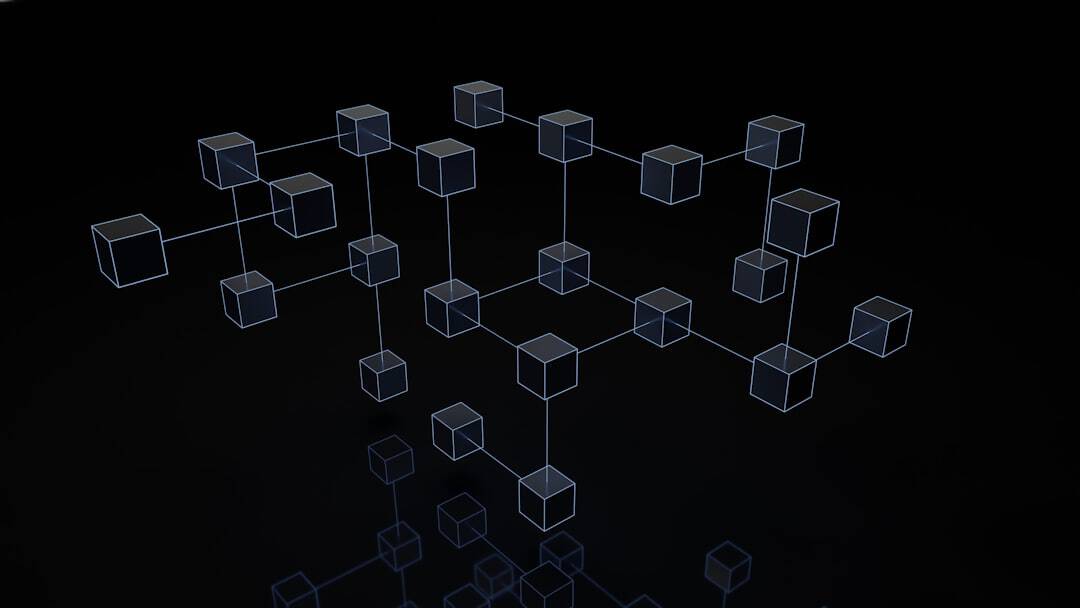Recurrent Neural Networks (RNNs) are a class of artificial neural networks designed to process sequential data. They are characterized by their cyclic connections, which allow them to exhibit dynamic temporal behavior. This architecture makes RNNs particularly effective for tasks involving time series data, natural language processing, and speech recognition.
A key feature of RNNs is their hidden state, which acts as a form of memory, enabling the network to capture dependencies between elements in a sequence. This memory mechanism allows RNNs to consider context and long-range dependencies, making them suitable for tasks that require understanding of sequential information. However, traditional RNNs face challenges with the vanishing gradient problem, which limits their ability to learn long-term dependencies.
To address this issue, advanced architectures such as Long Short-Term Memory (LSTM) and Gated Recurrent Unit (GRU) networks have been developed. These variants incorporate specialized mechanisms to better preserve and update information over extended sequences. RNNs have found widespread application in various fields of artificial intelligence, including natural language processing, time series analysis, and speech recognition.
Their ability to process sequential data and maintain context makes them a valuable tool in many machine learning tasks that involve temporal or ordered information.
Key Takeaways
- RNNs are a type of artificial neural network designed to recognize patterns in sequences of data, making them ideal for tasks like speech recognition and language translation.
- RNNs are widely used in natural language processing, time series analysis, and speech recognition, among other applications, due to their ability to process sequential data and capture dependencies over time.
- Training and tuning RNNs can be challenging due to issues like vanishing gradients and long training times, but techniques like gradient clipping and using gated recurrent units (GRUs) can help mitigate these challenges.
- Despite their effectiveness, RNNs have limitations such as difficulty in capturing long-term dependencies and the potential for overfitting, which can impact their performance in certain tasks.
- Improving RNN performance can be achieved through techniques like using attention mechanisms, optimizing hyperparameters, and implementing regularization methods to enhance generalization and reduce overfitting.
Applications of Recurrent Neural Networks in AI
Natural Language Processing
One of the most prominent applications of RNNs is in natural language processing (NLP), where they are used for tasks such as language modeling, machine translation, and sentiment analysis. RNNs are well-suited for NLP tasks because they can capture the sequential nature of language and maintain a memory of previous words or characters, allowing them to generate coherent and contextually relevant text.
Time Series Analysis and Prediction
Another important application of RNNs is in time series analysis and prediction. RNNs can be used to model and forecast sequential data, such as stock prices, weather patterns, or physiological signals. Their ability to capture temporal dependencies makes them effective for predicting future values based on historical data, which has numerous practical applications in finance, meteorology, and healthcare.
Speech Recognition and Synthesis
Furthermore, RNNs have found use in speech recognition and synthesis, where they can process audio signals and generate human-like speech. By capturing the temporal dynamics of speech, RNNs can produce more natural-sounding speech synthesis and improve the accuracy of speech recognition systems. Overall, the applications of RNNs in AI are diverse and far-reaching, spanning from natural language processing to time series analysis and speech recognition.
Sequential Data Processing
Their ability to capture sequential dependencies makes them a valuable tool for processing and understanding sequential data in various domains.
Training and Tuning Recurrent Neural Networks for AI

Training and tuning recurrent neural networks (RNNs) for AI applications require careful consideration of several key factors to ensure optimal performance. One important aspect of training RNNs is the choice of loss function, which measures the disparity between the predicted output and the ground truth. Common loss functions for RNNs include mean squared error for regression tasks and categorical cross-entropy for classification tasks.
Selecting an appropriate loss function is crucial for guiding the learning process and optimizing the network’s performance. Another critical factor in training RNNs is the choice of optimization algorithm, which determines how the network’s weights are updated during training. Popular optimization algorithms for RNNs include stochastic gradient descent (SGD), Adam, and RMSprop, each with its own advantages and limitations.
The selection of an optimization algorithm can significantly impact the convergence speed and generalization ability of the RNN, making it an important consideration in the training process. Furthermore, tuning the hyperparameters of RNNs, such as the learning rate, batch size, and network architecture, is essential for achieving optimal performance. Hyperparameter tuning involves systematically adjusting the settings of the RNN to find the configuration that maximizes its performance on a validation set.
This process often requires extensive experimentation and fine-tuning to strike the right balance between underfitting and overfitting. In conclusion, training and tuning RNNs for AI applications involve careful consideration of factors such as loss functions, optimization algorithms, and hyperparameters to ensure that the network achieves optimal performance.
Challenges and Limitations of Recurrent Neural Networks in AI
| Challenges and Limitations of Recurrent Neural Networks in AI |
|---|
| 1. Vanishing and Exploding Gradients |
| 2. Difficulty in Capturing Long-Term Dependencies |
| 3. Training Time and Computational Cost |
| 4. Difficulty in Handling Variable-Length Sequences |
| 5. Lack of Parallelism in Training |
| 6. Sensitivity to Hyperparameters |
Despite their effectiveness in processing sequential data, recurrent neural networks (RNNs) face several challenges and limitations that can impact their performance in AI applications. One major challenge is the vanishing gradient problem, which occurs when gradients become increasingly small as they propagate back through time in the network. This can hinder the ability of RNNs to capture long-term dependencies in sequential data, leading to suboptimal performance on tasks that require memory over extended time periods.
Another limitation of traditional RNNs is their susceptibility to exploding gradients, where gradients grow exponentially as they propagate through the network. This can lead to numerical instability during training and make it difficult to effectively update the network’s weights, especially in deep or complex architectures. Furthermore, RNNs are inherently sequential in nature, which limits their parallelization capabilities and can result in slower training and inference times compared to feedforward neural networks.
This can be a significant drawback when dealing with large-scale datasets or real-time applications that require fast processing speeds. In summary, the challenges and limitations of RNNs, such as the vanishing gradient problem, exploding gradients, and limited parallelization capabilities, can impact their performance in AI applications and necessitate the development of more advanced architectures and training techniques to mitigate these issues.
Improving Performance of Recurrent Neural Networks in AI
To address the challenges and limitations of recurrent neural networks (RNNs) in AI applications, several strategies have been developed to improve their performance and effectiveness. One approach is the use of more advanced RNN architectures, such as Long Short-Term Memory (LSTM) and Gated Recurrent Unit (GRU), which incorporate mechanisms to better preserve and update information over time. These architectures have been shown to mitigate the vanishing gradient problem and improve the ability of RNNs to capture long-term dependencies in sequential data.
Another strategy for improving the performance of RNNs is the use of regularization techniques, such as dropout and weight decay, to prevent overfitting and improve generalization. By introducing noise or constraints on the network’s parameters during training, regularization techniques can help prevent the network from memorizing noise in the training data and improve its ability to generalize to unseen examples. Furthermore, advancements in optimization algorithms, such as adaptive learning rates and second-order methods, have contributed to improving the training efficiency and convergence speed of RNNs.
These algorithms can help mitigate issues such as exploding gradients and accelerate the learning process by adapting the learning rate based on the characteristics of the loss landscape. In conclusion, improving the performance of RNNs in AI applications involves leveraging more advanced architectures, regularization techniques, and optimization algorithms to address their inherent challenges and limitations.
Future Developments and Trends in Recurrent Neural Networks for AI

Looking ahead, several future developments and trends are expected to shape the evolution of recurrent neural networks (RNNs) for AI applications. One prominent trend is the integration of attention mechanisms into RNN architectures, which allows the network to focus on specific parts of the input sequence when making predictions or generating outputs. Attention mechanisms have been shown to improve the performance of RNNs in tasks such as machine translation and image captioning by enabling them to selectively attend to relevant information.
Another future development is the exploration of hybrid architectures that combine RNNs with other types of neural networks, such as convolutional neural networks (CNNs) or transformer models. These hybrid architectures aim to leverage the strengths of different network types to tackle complex AI tasks that require both spatial and sequential processing capabilities. Furthermore, advancements in hardware acceleration technologies, such as specialized chips for deep learning inference and training, are expected to enhance the efficiency and scalability of RNNs in real-world applications.
By leveraging dedicated hardware for RNN computations, it will be possible to achieve faster inference times and handle larger datasets with greater ease. In summary, future developments and trends in RNNs for AI applications are likely to focus on attention mechanisms, hybrid architectures, and hardware acceleration technologies to further enhance their capabilities and performance.
Harnessing the Potential of Recurrent Neural Networks in AI
In conclusion, recurrent neural networks (RNNs) are a powerful class of neural networks that excel at processing sequential data by capturing dependencies and patterns over time. Their ability to maintain a memory of previous inputs makes them well-suited for a wide range of applications in AI, from natural language processing to time series analysis. However, RNNs face challenges such as the vanishing gradient problem and limited parallelization capabilities that can impact their performance in AI applications.
To address these challenges, strategies such as using more advanced architectures like LSTM and GRU, incorporating regularization techniques, and leveraging advancements in optimization algorithms have been developed to improve the performance of RNNs. Looking ahead, future developments and trends in RNNs for AI applications are expected to focus on attention mechanisms, hybrid architectures, and hardware acceleration technologies to further enhance their capabilities and performance. Overall, harnessing the potential of recurrent neural networks in AI requires a deep understanding of their underlying principles and challenges, as well as ongoing innovation to improve their effectiveness in processing sequential data across diverse domains.
With continued research and development efforts, RNNs are poised to play a pivotal role in advancing AI capabilities and addressing real-world challenges in areas such as natural language processing, time series analysis, and speech recognition.
If you’re interested in learning more about the significance and impact of the metaverse, you should check out this article on the challenges and opportunities from a business and economic perspective. It provides valuable insights into how the metaverse is shaping the future of industries and economies, and how businesses can leverage this technology to their advantage.
FAQs
What is a recurrent neural network (RNN)?
A recurrent neural network (RNN) is a type of artificial neural network designed to recognize patterns in sequences of data, such as time series or natural language.
How does a recurrent neural network differ from other types of neural networks?
RNNs differ from other types of neural networks in that they have connections that form a directed cycle, allowing them to exhibit dynamic temporal behavior. This makes them well-suited for tasks involving sequential data.
What are some common applications of recurrent neural networks?
RNNs are commonly used in natural language processing tasks such as language modeling, machine translation, and sentiment analysis. They are also used in speech recognition, time series prediction, and handwriting recognition.
What are some challenges associated with training recurrent neural networks?
One challenge with training RNNs is the vanishing gradient problem, where gradients become extremely small as they are backpropagated through time, making it difficult for the network to learn long-range dependencies. Another challenge is the exploding gradient problem, where gradients become extremely large and cause instability during training.
What are some variations of recurrent neural networks?
Some variations of RNNs include long short-term memory (LSTM) networks and gated recurrent units (GRUs), which were designed to address the vanishing gradient problem and improve the ability of RNNs to learn long-range dependencies.
What are some limitations of recurrent neural networks?
RNNs can struggle with capturing long-range dependencies in sequences, and they can be computationally expensive to train. Additionally, they may have difficulty handling input sequences of variable length.











Leave a Reply